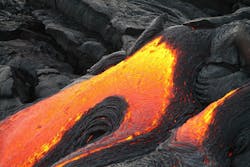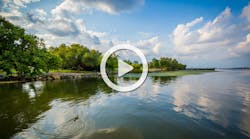Kilauea Volcano Lava Reaches The Pacific Ocean
Lava from the erupting Kilauea Volcano, Hawaii, has reached the Pacific Ocean, causing laze. According to the Hawaiian Volcano Observatory (HVO), laze is a combination of lava and haze that occurs when lava reaches the ocean and results in hydrochloric acid and volcanic glass particles in the air. The toxic byproduct causes lung, eye and skin irritation, and has led to deaths in the past.
The U.S. Coast Guard has enforced a Lava Entry Safety Zone for navigable waters around the Kilauea Volcano, reports CNN. The safety zone covers all waters within 300 meters of the lava flow. The laze plume spreads as far as 15 miles west of where the lava meets the ocean on the Big Island’s southern coast, said U.S. Geological Survey Scientist Wendy Stovall.
“All waterway users should be aware of the hazardous conditions associated with such an event,” said Lt. Cmdr. John Bannon, waterways management lead for the Coast Guard’s Honolulu sector. “Getting too close to the lava can result in serious injury or death.”
HVO reports that lava flow is picking up speed and sulfur dioxide emissions have tripled since the volcano erupted May 3, 2018. While the immediate danger residents face is to air quality, as the lava scorches the landscape and the ash settles, both water quality and soil erosion will become a major threat. Ash-tainted water could become a threat to drinking water and beach quality. Scorched soil could impact erosion and flood control.


